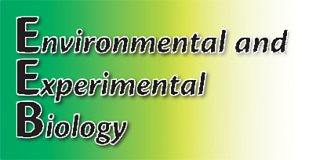
On-line: ISSN 2255–9582

| Faculty of Biology, University of Latvia | ||||||

|
Hard copy: ISSN 1691–8088
On-line: ISSN 2255–9582 Environ Exp Biol (2021) 19: 219–230
|
|||||

|
About the Journal | Retractions | Open Access | Author Guidlines | Current Issue | Archive |
|
Environmental and Experimental Biology |
Environ Exp Biol (2021) 19: 219–230 |
In RNA isolation protocol, two essential factors decide the quality of RNA. One is an extra care of avoiding effect of omnipresent ribonucleases using potent inhibitors such as guanidine isothiocyanate (GITC). The other is the extraction reagent’s chemical combination and concentration, which is decided based on the source sample of RNA. In virus-infected clinical samples, the extraction efficiency relies on the aetiologic agent’s titre value, which is dependent on the day of sample collection from the onset of the disease. The quality of RNA is crucial for accurate diagnosis and other downstream applications. Dengue, a flaviviral infection, displays a high titre and becomes desirable for molecular diagnosis. Here we optimized viral RNA isolation from dengue-infected NS1 (nonstructural protein) positive residual clinical serum samples based on the original GITC-phenol-chloroform extraction method. A concentrated RNA extracting reagent called REC reagent was defined and used along with the glycogen carrier. This laboratory-prepared reagent and glycogen as co-precipitant aided in better isolation of RNA. Glycogen also contributed to the visibility of the pellet, which helped to process the washing step efficiently. This methodology is cost-effective in a research laboratory setup against a commercial kit, especially when a vast number of specimens are involved. The manual methods give scope for modifications, thus bringing down the cost. The challenges connected to the usage of residual samples and the methodology is discussed in detail.